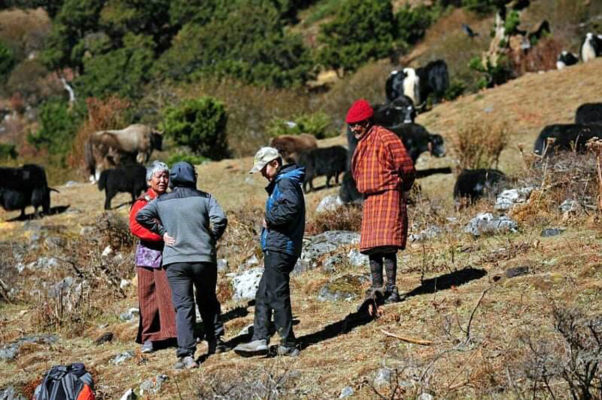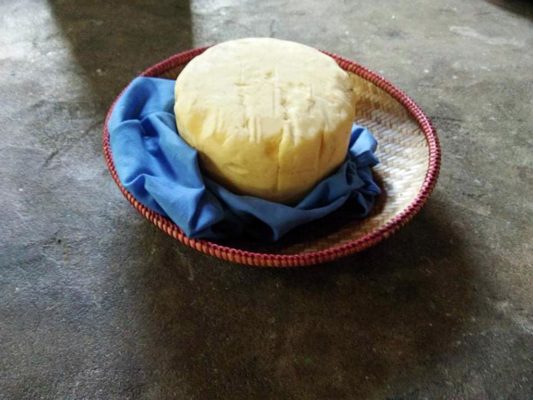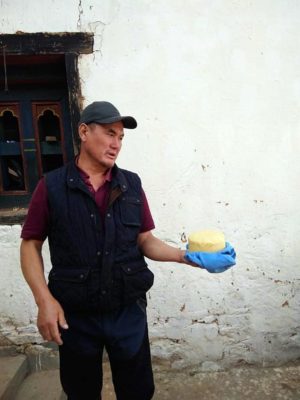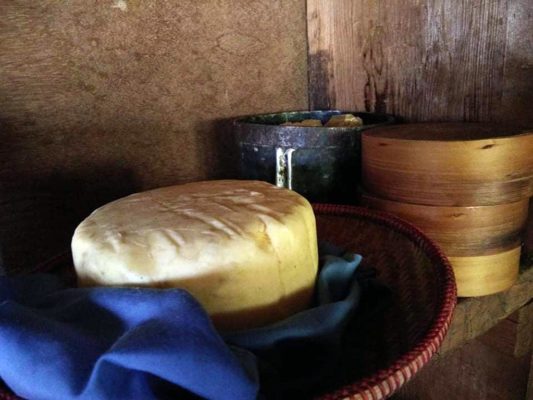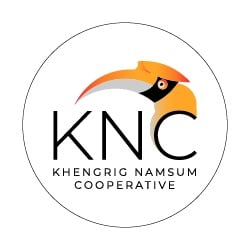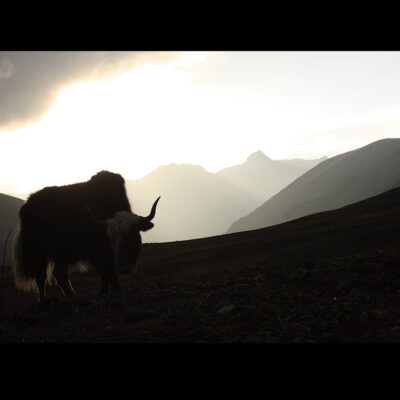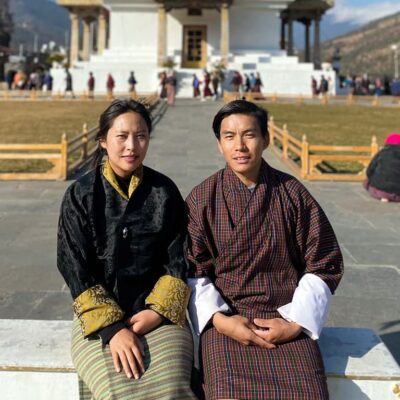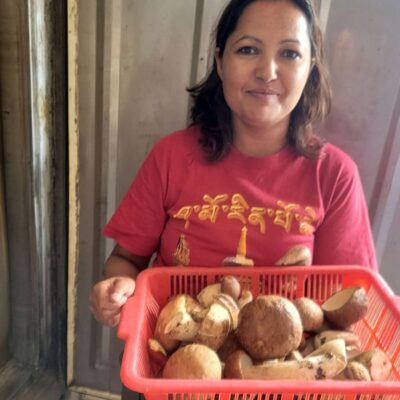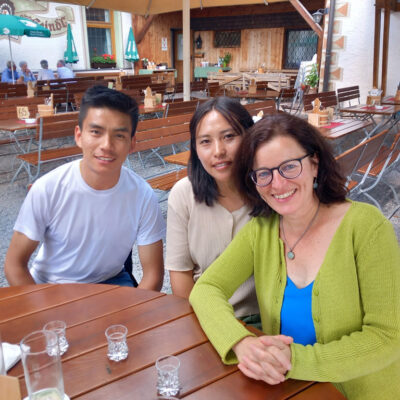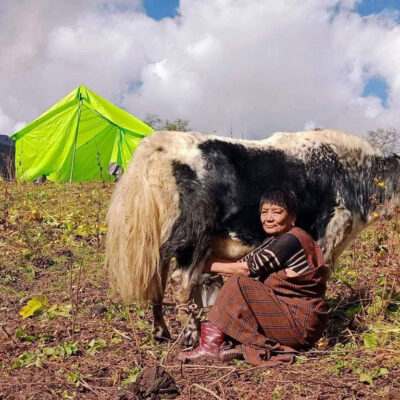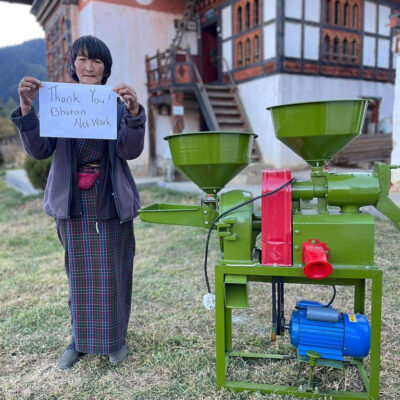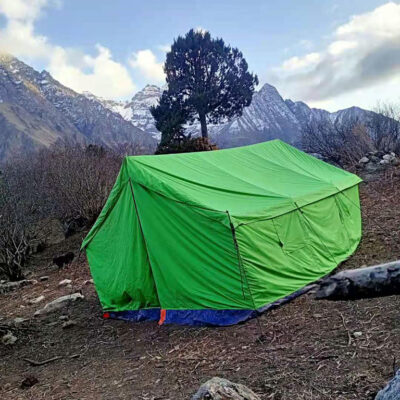This post is also available in: Deutsch (German)
By Dorji Bidha (Drukgyel Farmers), also published on Bhutan Homestay
Until the 1980s people throughout Bhutan practiced a barter system. Following the introduction of our currency, the Ngultrum, in 1974 by the RMA (Royal Monetary Authority of Bhutan), shops mushroomed even in remote parts of the country and villagers started shopping as though they were in Walmart.
Nevertheless, aside from such business transactions and trade, the Bhutanese still enjoy barter, jetshong as we call it in the National language, Dzongkha. Jetshong is the exchange of goods and services for other goods and services without using a medium of exchange, such as money. Bhutan, although a small country, consists of different ecological zones that each produces their own particular agricultural produce. Therefore, a main reason for barter here is to exchange products from these different zones as village people used to depend entirely for their livelihoods on local agricultural production. These exchanges we make on our own accord, without any witnesses or paperwork. Barter is possible because of the trust we have for each other, established through the hardships we face and share together in our daily life.
Who are we?
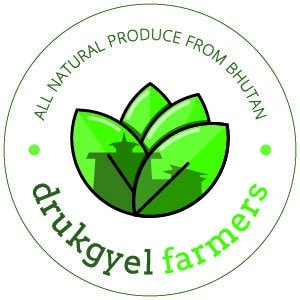 We are the farmers of Tsento gewog in Paro. We reside in the subalpine region, growing cash crops like rice, maize, chilies and wheat, which we then exchange for butter, cheese, herbs and shrubs with the people who live in the higher alpine meadow areas. For instance, in the warmer seasons we grow plenty of red chilies in Paro valley; we dry some of them, and then in winter we exchange them with the nomads from Soe and Yaksa. Soe and Yaksa are high altitude region, approximately 4000m above sea level, three days and two nights walk from Paro valley, along the Jomolhari trekking route. The semi-nomads who live there exchange their dried yak meat and butter with us in return. For a kilo of dried meat, we will exchange a kilo of chilies. We also barter our wheat for their herbs and shrubs, which we use as incense during rituals including our daily morning offerings in our altar room.
We are the farmers of Tsento gewog in Paro. We reside in the subalpine region, growing cash crops like rice, maize, chilies and wheat, which we then exchange for butter, cheese, herbs and shrubs with the people who live in the higher alpine meadow areas. For instance, in the warmer seasons we grow plenty of red chilies in Paro valley; we dry some of them, and then in winter we exchange them with the nomads from Soe and Yaksa. Soe and Yaksa are high altitude region, approximately 4000m above sea level, three days and two nights walk from Paro valley, along the Jomolhari trekking route. The semi-nomads who live there exchange their dried yak meat and butter with us in return. For a kilo of dried meat, we will exchange a kilo of chilies. We also barter our wheat for their herbs and shrubs, which we use as incense during rituals including our daily morning offerings in our altar room.
The most popular exchange item is fermented meat (ma sha). Ma sha is made from fresh yak meat brought from the Himalayan high mountains in the months of December and January. We wrap it in a clean white cloth and hang it from the ceiling in our attic, keeping it there for a few months for fermentation. It gives a pleasant smell during the Paro tshechu (annual festival with mask dances). We always enjoy ma sha when we are at the archery ground while attending tshechu, eating it with ezay (chilli paste) during the lunch break.
Saphu – offering the first harvest
As a sign of gratitude it is the tradition of the Parop (people of Paro) to offer saphu (the first offering of a new harvest). In October, my mother sent me with saphu to our yak herder friends at Tsophu Twin Lakes. Saphu from my village consists of fresh flattened rice, which is later mixed with yak butter, milk and yogurt. Fresh rice and chilies are also considered to be saphu. Saphu from the yak herders’ side consists of ma sha, butter and cheese.
Saphu practice is not about the quantity, but about the intention: maintaining the relationships, thuenlam, involved in the barter tradition. It is an offering of thanksgiving, following the year-long prayers for good health and a good harvest, with the hope of renewed relationships and prayers for coming days and months until the next harvest.
Therefore, on my last visit to our friends in Tsophu Twin Lake, my mom sent saphu. The elderly couple there was very happy to know that my old parents are doing well and so, in return, sent their own saphu consisting of fresh yak products and Tibetan radish (poe lap).
Barter relations over generations
In the case of my family’s household, yak herder Jojo Paso, now in his 70s, visits our farm during fall season. When he was young, Jojo Paso was well known for his physical strength and fitness. He still brings us fresh yak meat, butter, cheese (hard and soft) as well as herbs and shrubs. Whenever he visits, Jojo Paso stays with us in Paro – we are his hosts, nyep. He buys all his goods for the harsh winter and early spring months that he experiences living at high altitudes, including fodder for his yaks. He also shares with us the news from his and other mountain villages, for example how his jim (female yak) gave birth to a healthy calf.
Jojo Paso will stay for a week and as soon as we have helped gathering all his goods, he’ll head back to his home.
My grandma used to explain to me why Jojo Paso always needed to start his return journey home early in the morning. She would tell of all the incidents where nomads reached their camps late and on the way met with the Himalayan yeti (migoi in Dzongkha). That’s why nomads always prefer traveling in daylight.
Jum Pem Lham, Jojo Passo’s wife, needs to look after hundreds of yaks while he is away, so that’s why she rarely visits Paro. But when she does, she makes sure to come during Paro festival, so that she can wear her finest kira (traditional Bhutanese dress) and enjoy the day to her fullest.
Age old traditions and continued significance
The covid-19 pandemic affects the Bhutanese economy. However, on the positive side, it has also highlights the great advantages of the age-old barter system for people like those in my village, and the importance of maintaining this informal relationship of exchange.


